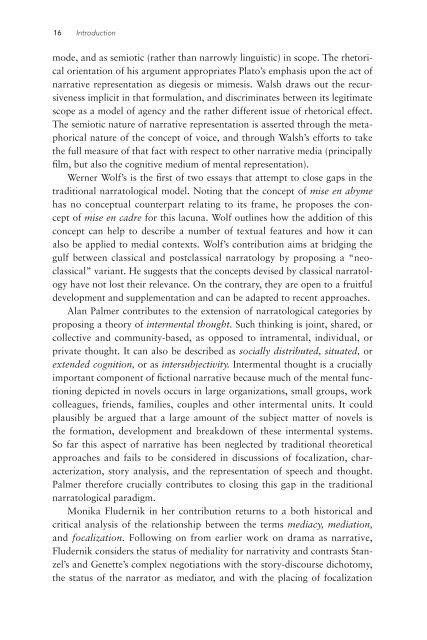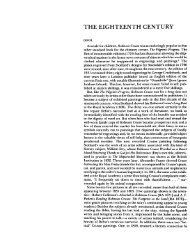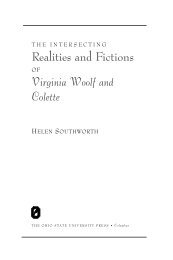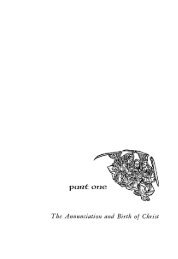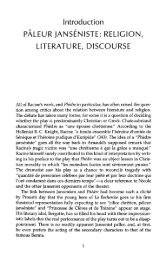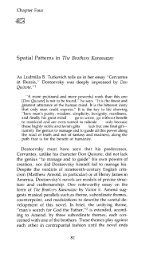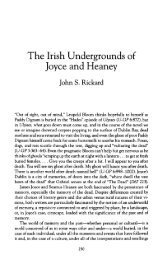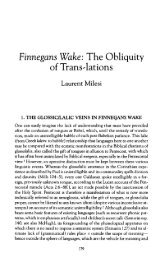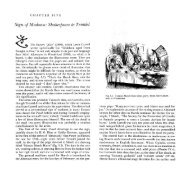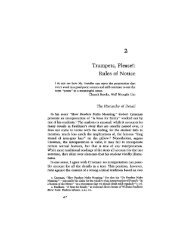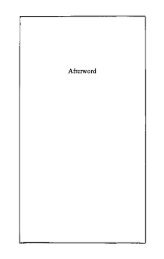Postclassical Narratology: Approaches and Analyses
Postclassical Narratology: Approaches and Analyses
Postclassical Narratology: Approaches and Analyses
You also want an ePaper? Increase the reach of your titles
YUMPU automatically turns print PDFs into web optimized ePapers that Google loves.
16 Introduction<br />
mode, <strong>and</strong> as semiotic (rather than narrowly linguistic) in scope. The rhetorical<br />
orientation of his argument appropriates Plato’s emphasis upon the act of<br />
narrative representation as diegesis or mimesis. Walsh draws out the recursiveness<br />
implicit in that formulation, <strong>and</strong> discriminates between its legitimate<br />
scope as a model of agency <strong>and</strong> the rather different issue of rhetorical effect.<br />
The semiotic nature of narrative representation is asserted through the metaphorical<br />
nature of the concept of voice, <strong>and</strong> through Walsh’s efforts to take<br />
the full measure of that fact with respect to other narrative media (principally<br />
film, but also the cognitive medium of mental representation).<br />
Werner Wolf’s is the first of two essays that attempt to close gaps in the<br />
traditional narratological model. Noting that the concept of mise en abyme<br />
has no conceptual counterpart relating to its frame, he proposes the concept<br />
of mise en cadre for this lacuna. Wolf outlines how the addition of this<br />
concept can help to describe a number of textual features <strong>and</strong> how it can<br />
also be applied to medial contexts. Wolf’s contribution aims at bridging the<br />
gulf between classical <strong>and</strong> postclassical narratology by proposing a “neoclassical”<br />
variant. He suggests that the concepts devised by classical narratology<br />
have not lost their relevance. On the contrary, they are open to a fruitful<br />
development <strong>and</strong> supplementation <strong>and</strong> can be adapted to recent approaches.<br />
Alan Palmer contributes to the extension of narratological categories by<br />
proposing a theory of intermental thought. Such thinking is joint, shared, or<br />
collective <strong>and</strong> community-based, as opposed to intramental, individual, or<br />
private thought. It can also be described as socially distributed, situated, or<br />
extended cognition, or as intersubjectivity. Intermental thought is a crucially<br />
important component of fictional narrative because much of the mental functioning<br />
depicted in novels occurs in large organizations, small groups, work<br />
colleagues, friends, families, couples <strong>and</strong> other intermental units. It could<br />
plausibly be argued that a large amount of the subject matter of novels is<br />
the formation, development <strong>and</strong> breakdown of these intermental systems.<br />
So far this aspect of narrative has been neglected by traditional theoretical<br />
approaches <strong>and</strong> fails to be considered in discussions of focalization, characterization,<br />
story analysis, <strong>and</strong> the representation of speech <strong>and</strong> thought.<br />
Palmer therefore crucially contributes to closing this gap in the traditional<br />
narratological paradigm.<br />
Monika Fludernik in her contribution returns to a both historical <strong>and</strong><br />
critical analysis of the relationship between the terms mediacy, mediation,<br />
<strong>and</strong> focalization. Following on from earlier work on drama as narrative,<br />
Fludernik considers the status of mediality for narrativity <strong>and</strong> contrasts Stanzel’s<br />
<strong>and</strong> Genette’s complex negotiations with the story-discourse dichotomy,<br />
the status of the narrator as mediator, <strong>and</strong> with the placing of focalization


